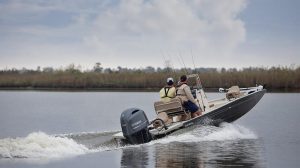The Ultimate Guide to Test Boats: Unleashing Your Adventurous Spirit
Introduction: Are you ready to set sail on the open waters and embark on unforgettable nautical adventures? Whether you're a seasoned sailor or a complete newbie, testing boats before making a purchase is crucial. This comprehensive guide will walk you through everything you need to know about testing boats, ensuring you choose the perfect vessel to suit your needs. From assessing boat types to evaluating performance and conducting inspections, this guide has got you covered. So, grab your life jacket and let's dive in!
-
Determine Your Needs: Before you embark on the journey of testing boats, it's essential to assess your requirements. Consider your intended use for the boat—are you looking for a fishing vessel, a recreational cruiser, or a high-speed performance boat? Understand the activities you plan to engage in, the number of passengers you expect to accommodate, and the size of the water bodies you'll navigate.
-
Research Boat Types: Once you have a clear idea of your needs, familiarize yourself with the different types of boats available. From sailboats to motorboats, pontoon boats to fishing boats, each vessel has its unique features and capabilities. Research extensively, read reviews, and consult experts to gain insights into the pros and cons of various boat types based on your preferences.
-
Seek Professional Advice: If you're new to boating, consider consulting with a boating professional or a reputable boat dealer. They can provide valuable guidance based on your requirements, budget, and experience level. Professionals can suggest suitable boat models, provide tips on what to look for during boat tests, and answer any questions you may have.
-
Boat Performance Assessment: When you're ready to test boats, evaluating their performance becomes crucial. Here are a few aspects to consider:
a. Handling and Maneuverability: Assess how the boat responds to steering inputs, how it turns at different speeds, and its overall stability in varying water conditions.
b. Speed and Acceleration: Test the boat's speed and acceleration capabilities to ensure they align with your expectations.
c. Fuel Efficiency: Check the boat's fuel consumption rate to understand its efficiency and long-term operating costs.
d. Noise and Vibration: Pay attention to any unusual noise or excessive vibrations, as they may indicate underlying mechanical issues.
-
Boat Inspection: Conducting a thorough inspection is vital to ensure the boat is in good condition. Here are key areas to focus on:
a. Hull and Structure: Inspect the hull for cracks, damage, or signs of repair. Check the overall structural integrity of the boat, including any signs of corrosion or rot.
b. Electrical and Mechanical Systems: Test all electrical components, including lights, navigation systems, and bilge pumps. Examine the engine, propeller, and other mechanical systems for any signs of wear or malfunction.
c. Interior and Amenities: Assess the comfort and functionality of the boat's interior, including seating, storage spaces, plumbing systems, and other amenities.
-
Consider Safety Features: Boating safety should never be compromised. During boat tests, pay attention to safety features such as life jackets, fire extinguishers, emergency signaling devices, and proper ventilation systems. Ensure the boat meets the necessary safety standards and regulations.
-
Multiple Tests and Sea Trials: Don't rush the boat testing process. Conduct multiple tests and sea trials under various conditions. Evaluate the boat's performance in calm waters as well as rough seas to gauge its stability and handling capabilities in different environments.
Conclusion: Testing boats before making a purchase is an essential step in ensuring you find the perfect vessel for your needs. By following this ultimate guide, you'll be well-prepared to assess boat types, evaluate performance, conduct inspections











